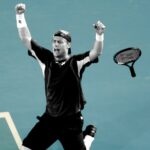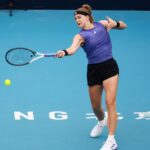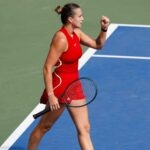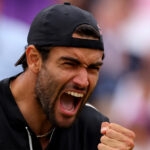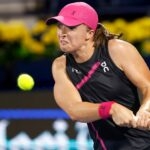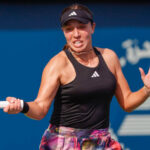January 27, 2002: The day Thomas Johansson stunned Safin to win the Australian Open title
Every day, Tennis Majors looks back at the biggest moments in tennis history. On January 27, 2002, Thomas Johansson upset Marat Safin to win the Australian Open.
 Thomas Johansson
Thomas Johansson
What happened exactly on that day
On this day, January 27, 2002, to general astonishment, Thomas Johansson, world No 18, claimed the Australian Open title, defeating Marat Safin in the final (3-6, 6-4, 6-4, 7-6). The Swede won a tournament full of surprises, where most of the top seeds were eliminated in the early rounds, and where all the remaining favourites were in the same part of the draw. This would remain Johansson’s only major title and his only appearance in a Grand Slam final.
The players: Marat Safin and Thomas Johansson
- Thomas Johansson, 2002 Australian Open champion
Thomas Johansson, from Sweden, was born in 1975. He broke into the top 100 in 1996, reaching the fourth round at Wimbledon (lost to Todd Martin, 3-6, 6-3, 7-5, 6-2). The following year, he claimed his first title in Copenhagen, defeating Martin Damm in the final (6-4, 3-6, 6-2), and at the end of 1998, he entered the top 20 after he reached the US Open quarter-finals where he was edged by Mark Philippoussis (4-6, 6-3, 6-7, 6-3, 7-6).
In 1999, he won his first and only Masters 1000 title in Montreal, where he defeated Yevgeny Kafelnikov in the final (1-6, 6-3, 6-3), and in 2000, he reached the quarter-finals at the US Open a second time, losing to Martin (6-4, 6-4, 3-6, 7-5). At the start of the 2002 Australian Open, he was world No 18.
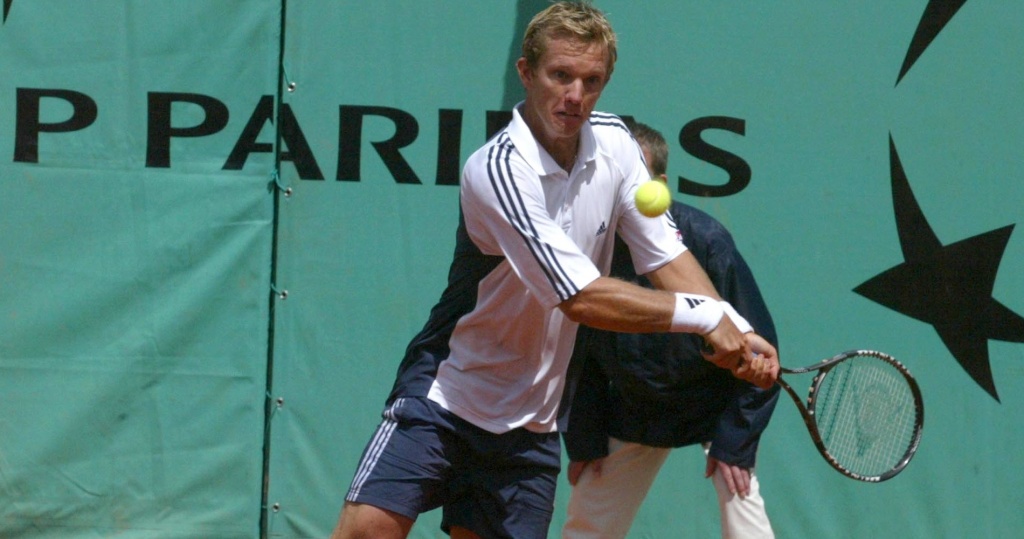
- Marat Safin – Two-time Grand Slam champion and former world No 1
Marat Safin, from Russia, was born in 1980. He obtained his first remarkable result at Roland-Garros in 1998: ranked only No 116 in the world, he made his way out of the qualifications, and then beat former world No 1 Andre Agassi in the first round (5-7, 7-5, 6-2, 3-6, 6-2). In the next round, the 18-year-old ousted the defending champion and world No 8, Gustavo Kuerten (3-6, 7-6, 3-6, 6-1, 6-4), and he was only edged in the fourth round by Frenchman Cédric Pioline (7-5, 4-6, 6-7, 6-4, 6-4).
Safin then reached the semi-finals in Long Island, before making it to the fourth round again at the US Open (defeated by world No 1, Pete Sampras, 6-3, 6-4, 6-2). He finished the year ranked 48. In 1999, he claimed his first title in Boston (defeating Greg Rusedski in the final, 6-4, 7-6) and reached the final at the Paris Masters 1000 (lost to Agassi, (7-6, 6-2, 4-6, 6-4). Safin’s career peaked in 2000, when he claimed his first Grand Slam title at the US Open (defeating Pete Sampras in the final, 6-4, 6-3, 6-3), before he became the youngest world No 1 in tennis history (a record broken in 2001 by Hewitt), in November. The Russian only held that spot for two weeks at the time, and was overtaken by Gustavo Kuerten at the last minute for the ATP year-end champion crown. In 2001, he was not as successful, and, despite reaching the semi-finals at the US Open (defeated by Sampras, 6-3, 7-6, 6-3) and claiming the Paris Masters 1000 title (defeating Hewitt in the final, 7-6, 6-0, 6-4), he finished the year outside of the top 10 (No 11).
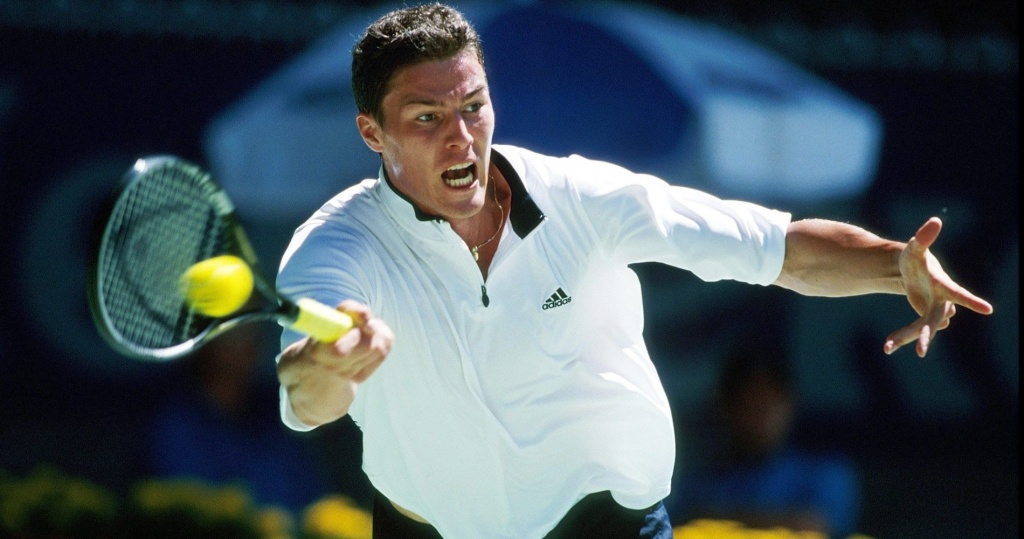
The place: Australian Open, Melbourne Park
Unlike the other Grand Slam tournaments, the Australian Open (first known as the Australasian Championships and, later, the Australian Championships) had changed location several times over the years. In fact, the event switched cities every year before it settled in Melbourne in 1972, and no fewer than five Australian cities had hosted the event at least three times: Melbourne, Sydney, Adelaide, Brisbane and Perth. The event was originally held on grass at the Kooyong Stadium, in a wealthy eastern suburb of Melbourne.
Its timing had changed several times as well, between early December and January, going from being the first Grand Slam of the year to being the last. Until 1982, many of the best players skipped the Australian Open, mainly because of the remoteness, and the low prize money, but then, with the triumph of Mats Wilander, the dynamic changed. The tournament’s board made big efforts to become as prestigious as the other Grand Slams, which ended up with the event moving to a new location in 1988, at Flinders Park (later known as Melbourne Park), switching from grass to hard courts, and displaying the first-ever centre court equipped with a retractable roof. Prizes increased as well, and it wasn’t long before the tournament became many player’s favourite Grand Slam.

The facts
Since day one, the 2002 Australian Open had been one of the most unpredictable tournaments in tennis history. Although Lleyton Hewitt had clinched the world No 1 spot at the end of 2001, there had not been a real leader on the Tour that year, and the last four major tournaments had seen four different champions.
It all began with the defending champion in Melbourne and seed No 3, Andre Agassi, withdrawing at the last minute due to a wrist injury. Then Hewitt, the crowd favourite and world No 1, who had caught chickenpox two weeks prior to the event, was defeated in the first round by Alberto Martin (3-6, 6-1, 6-4, 7-6). The second seed, Kuerten, was also ousted in the first round by Julien Boutter (3-6, 4-6, 7-5, 6-3, 6-3), and the fourth and fifth seeds, Yevgeny Kafelnikov and Sébastien Grosjean, were eliminated in the second round.
When the quarter-finals began, all the observers thought the future champion was in the top part of the draw, where Marcelo Rios, Tommy Haas and Safin were contending for a spot in the final. Amongst these talented players, it was Safin who made his way into the last round, where he faced Johansson, who qualified for the final without having beaten a single top 20 player. Needless to say, the Russian was the pundit’s pick.
For the Swede, the final day began with an unexpected taxi ride to Melbourne Park, as he would tell the ATP in 2019. “The car had been on time every single day for three weeks, but that day the car didn’t show up. And we were waiting, and we were waiting, and then my coach looked at me and said, ‘I actually forgot to order a car’. The funny thing is that I actually came with a taxi. Normally they don’t let taxi cars into the venue, so we came up to the security guy and my coach said, ‘We’re actually going to play the final here in a couple of hours, so can you please let us in?’ It was a weird start to the whole thing, but in some way I think it was good for me, because I relaxed after that.”
Safin, who entered the court with his shoes untied, with his three famous groupies in his players box (“the Safinettes”), seemed even more relaxed, and he broke Johansson in the first game, taking the first set, 6-3. The Swede then found his pace from the baseline, and, using the Russian’s power against him, patiently moved him around the court to win the second set, 7-6. In the third set, he started a drop shot campaign to wear down the 2000 US Open champion, who had had one less day of recovery before the final. Johansson put an unexpected end to one of the most unpredictable Grand Slam tournaments in tennis history, defeating Safin 3-6, 6-4, 6-4, 7-6.
“These two weeks have been the best two weeks of my life and today was just a dream come true,” Johansson commented. I didn’t feel comfortable on the court today,” Safin added. “He was overpowering me from the baseline. It’s very unusual for me, somebody playing the backhand better than me. He was on fire.”
What happened next?
A few months after his first and only Grand Slam title, Johansson would reach the highest ranking of his career as world No 7. In 2005, he would obtain another remarkable result in a major tournament, reaching the Wimbledon semi-finals (defeated by Andy Roddick, 6-7, 6-2, 7-6, 7-6). He would retire in June 2009, holding nine ATP crowns and he would be remembered as one of the most unexpected Grand Slam winners in tennis history.
Safin would play two more finals at Melbourne Park, defeated by Roger Federer in 2004 (7-6, 6-4, 6-2), but claiming a second Grand Slam title in 2005, beating Hewitt in the final (1-6, 6-3, 6-4, 6-4) after a legendary semi-final win against Federer (5-7, 6-4, 5-7, 7-6, 9-7). After a slow decline, Safin would retire in 2009.
